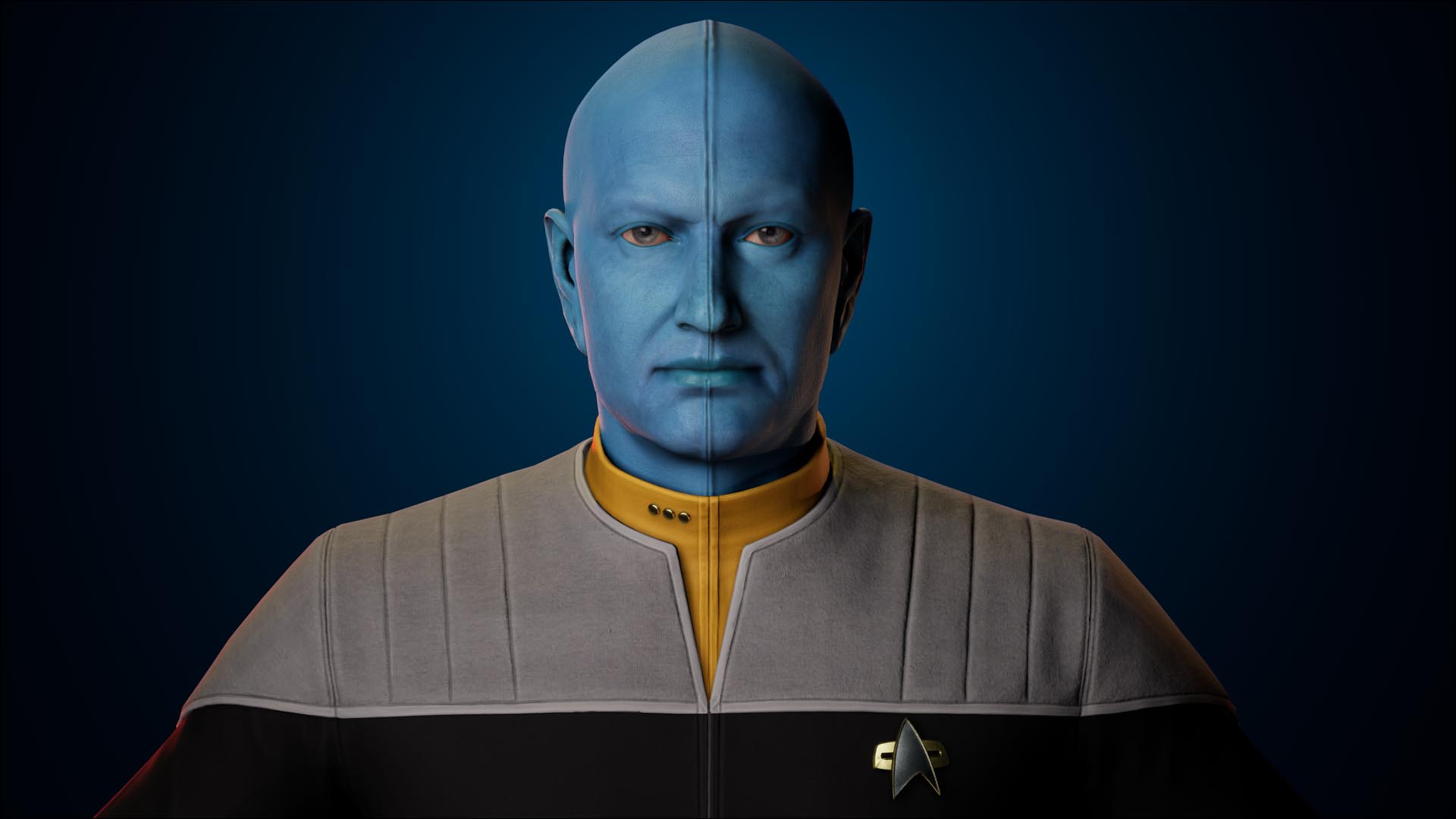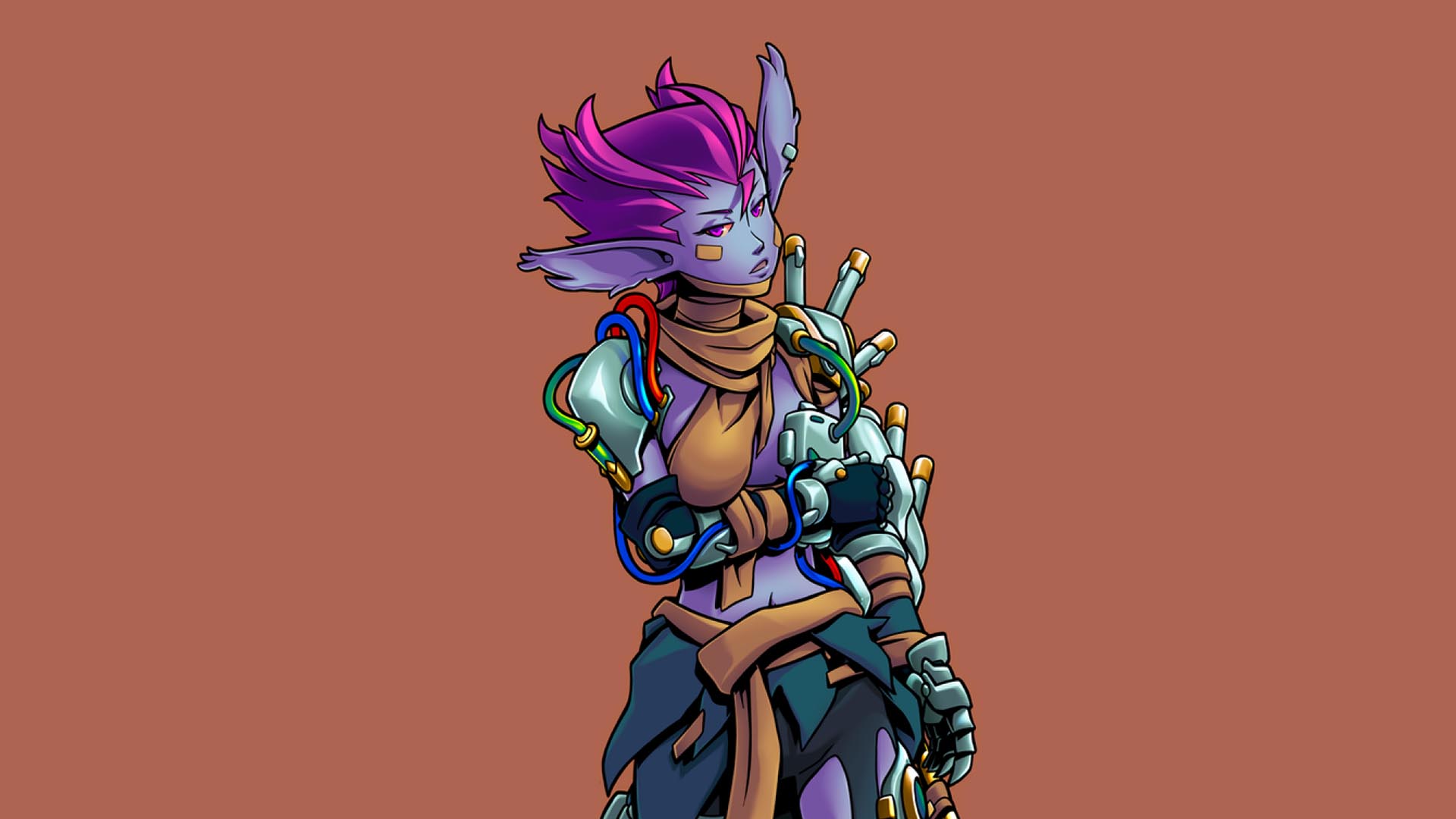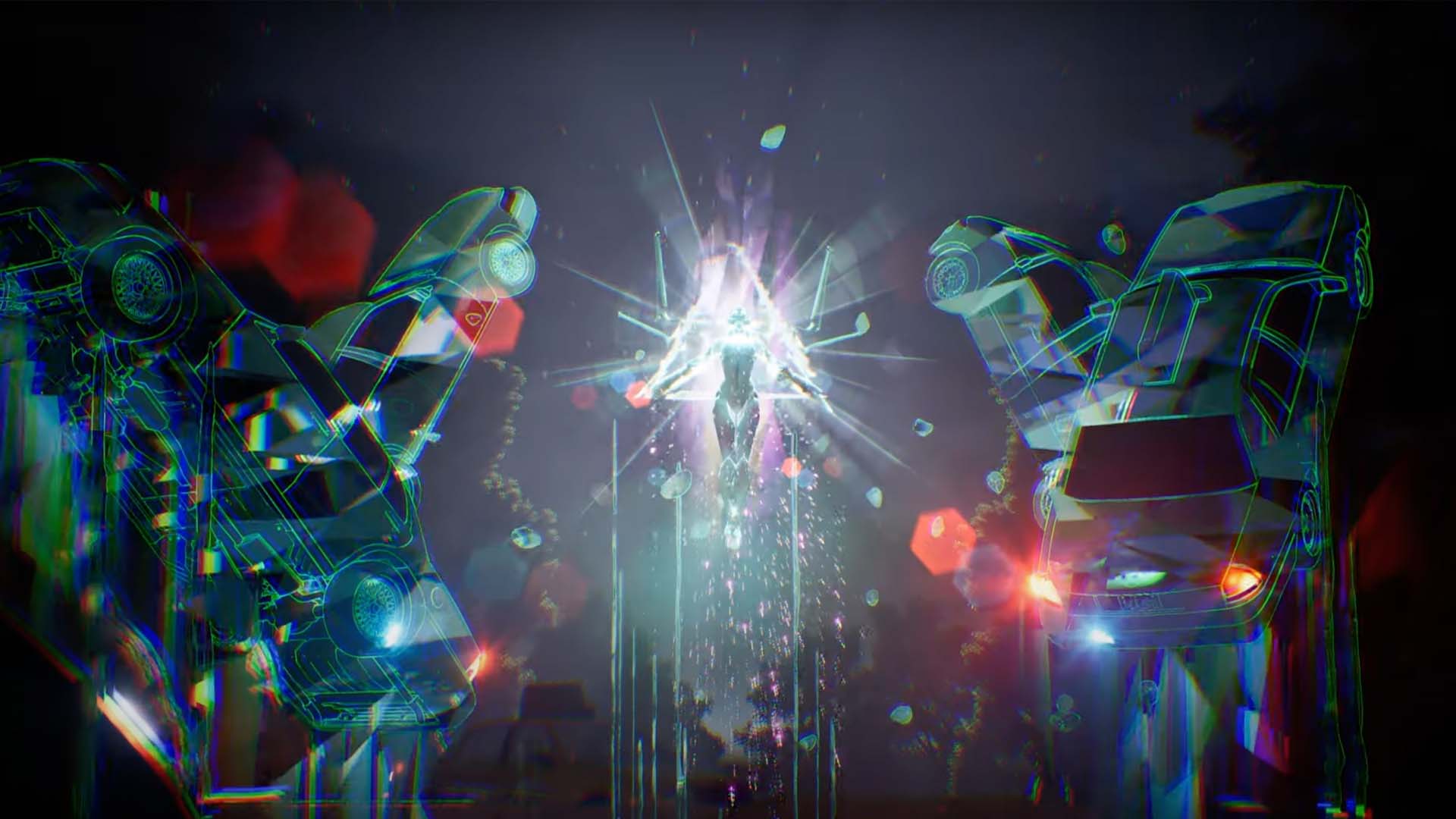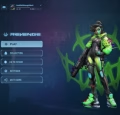The world of gaming is constantly evolving, and so are the expectations of gamers. Visual effects (VFX) have become an integral part of modern games, creating immersive worlds and enhancing the player experience. In this comprehensive guide, we’ll take a deep dive into everything you need to know about creating stunning game VFX for games.
What is VFX for Gaming?
VFX in games are the computer-generated effects that bring life to game worlds and add excitement to gameplay. These effects include explosions, smoke, fire, water, particle effects, and more. They create a sense of realism, impact, and excitement in the game.
Game VFX for games is one of Magic Media’s cornerstone services, with which we have years of experience working on a diverse range of projects, from indie to AAA. Let’s uncover what game VFX is and how it changes game development’s possibilities.
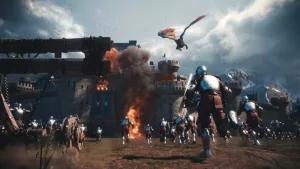
The Roles of Real-Time Game VFX
Real-time game VFX fulfills several roles. It plays an important role in player communication so that they inherently understand what is happening throughout their gameplay experience. In most games, certain effects mean specific things universally. Blue or white magical effects in fantasy games often represent healing, whereas red could mean a damaging effect. This also applies to more common effects such as fire, water, wind, and more, where we intrinsically understand their effects because they’ve been well-communicated visually.
Real-time video game VFX also plays a significant role in immersing players in the game world. Some horror games, like the classic Silent Hill 2, make plentiful use of real-time VFX to create a foggy, unknowable atmosphere, which helps dial up the game’s palpable sense of tension. Magical worlds like the realm of Vanaheim in God of War Ragnarok use real-time VFX to create an extraordinary and other-worldly atmosphere, with multicolored visual phenomenons that would be impossible to see in real life.
Real-Time Game VFX Techniques
Several different techniques are used to create the desired real-time game VFX. Particle systems are used to create effects such as smoke, fire, sparks, and magical spell effects. Particle effects are defined by numerous small particles whose properties can be adjusted to generate an effect. Their size, color, velocity, lifespan, and much more can be adjusted to produce various effects. These robust options make particle effects one of the most powerful techniques in real-time video game VFX.
Shaders are programs that draw on a system’s GPU to manipulate objects in real time. Pixel shaders, for example, are GPU-based programs that control the color and lighting of individual on-screen pixels. They can be used for dynamic lighting effects, reflection, and refraction, and are only limited by the imagination of the developers creating them.
Responsive Real-Time Game VFX
Perhaps one of the biggest strengths of real-time video game VFX is its responsiveness to player actions. Inflicting damage upon enemies is a common example, where blood effects are produced in response to the attack. Preparing magical attacks is often accompanied by appropriately colored effects emanating from the player or their weapon of choice. Enemy weak spots, a common combat gameplay mechanic, will often glow with a particular color and visually respond when attacked to communicate with the player they successfully struck a critical spot.
Gamers, whether experienced or not, will more often than not be able to intuit the results of their actions in games with high-quality real-time game VFX. Though these communication devices formed in real-time VFX might not be overly noticeable to some, especially regular gamers, the absence of it could have a profound effect on one’s ability to understand actions and their results in games. It’s critical to design real-time game VFX with practicality in mind as well as its aesthetics. Its role is more critical to player experience and engagement than many realize.
The Art and Science of Game VFX
Creating compelling game VFX involves an intricate interplay of art and science. Game artists, like that seen at VFX Apprentice, craft each visual component while programmers and technical artists bring these creations to life using physics and algorithms. This requires an extensive understanding of aesthetic design and computer science, forming a union that culminates in the dynamic, responsive VFX we see in our favorite video games.
The Importance of VFX in Games
VFX in games plays a crucial role in creating an immersive and engaging game world. They set the tone of the game, create a sense of realism, and communicate important information to players. VFX can also be used to add depth and dimension to game characters and environments. At Magic Media, our main goal is to provide clients with the highest quality game VFX services to help your project reach its full potential.
There’s an often-loathed trope that is becoming more and more common in gaming, pop-up tutorials. Commonly parodied, basic and new mechanics stall the game at the moment of their introduction. A pop-up occurs, maybe accompanied by a brief video clip, and the mechanic is explained. Today, we wanted to look at the world of game VFX and the hidden meanings to be found within.
It’s often seen as a bar being lowered in gaming in terms of storytelling and gameplay. Though, it is understandable when you see the level of work, time, and expertize required to create a modern game. Maybe cutting a corner and clearly explaining something to a player might be the most efficient solution.
Color Coded
There is an engrained level of understanding amongst long time players as to what certain colors can mean. But also, a complexity in that color-coding and the context that defines it.
A calm, flowing green wave is probably a healing surge. A bubbling vial of green liquid that gives off smoke, you’re better off not ingesting that. Acid or poison, players instinctively understand the danger. A glowing blue aura likely means they’re magically shielded, but a blue attack could be magic or cold damage!
Players, developers, and artists all understand this color system and that context gives players the knowledge they need to figure it out. It’s something we discussed previously in a conversation about Game vs Movie VFX. Our artists understand the level of communication required for games. Without it, players are left frustrated and confused. And that means a lost player because they likely won’t come back to try it out again.
Other Key Elements
VFX artists often refer to the important elements of good VFX as color, contrast, shape, timing, and relatability.
Contrasts
Contrast directly relates to color. Effectively, the intensity of the effect can be directly correlated to the stronger color. League of Legends is a good example when looking at certain skill shots. Their area of effect or damage lines often have areas that are blocked in or are more heavily shaded with color – signifying greater damage or a worse effect if you are caught in that area. Contrast, directly with the effect, can also show players that a certain move is more powerful. A flicked ember that smolders out looks weak. A fist-sized fireball that illuminates its immediate area looks scarier. A maelstrom of fire eclipses the others.
Shape
Shape is just as important as a universal understanding. There are so many things in our world that we associate elements or feelings with. Softer shapes such as orbs and bubbles are immediately seen as helpful or friendly. Sharper and pointed elements tell us this might be dangerous or at least aggressive. And aside from the overall visual design, just like color, we know what shapes mean. If players see a shield or a sword, there are inferences to be made about what they represent or mean given the context they’re shown. And finally, shape gives us direction – letting players know immediately where an effect is coming from and where it’s going.
Timing
Second to last is timing! This is where core animation principles are used by VFX artists to sell an effect and give it life. Anticipation is the key to all things. Drama or comedy, the build and the anticipation of the release is where true entertainment lies. A powerful spell blinking into existence immediately isn’t entertaining. It grows and pulses with power, having lasting effects before and after casting sells us its power. It tells players instinctually that it is something to be careful of.
There’s also a fun trick that many of our artists refer to regarding timing. Things that pulse and move slower than the normal heartbeat – are often seen as serene and inviting. Things that move faster, somehow always communicate danger or some level of repulsion from us.
Relatability
Relatability is really all about grounding your VFX in things we understand. Even with fantasy and sci-fi, everything is bound by our world and our perception. Something beyond our understanding isn’t going to communicate anything to players other than confusion or otherworldliness.
It’s easy to get carried away but our artists are always focusing on the concept rather than the tool or potential of the software. Keeping things relatable means all your work with color, shape, contrast, and timing won’t be lost.
Creating Stunning VFX For Gaming
To create stunning VFX for games, developers use a variety of techniques, including 2D animation, 3D modeling, physics simulations, and more. We’ll explore each of these techniques in more detail below.
2D Animation
2D animation is a technique used to create 2D images that are animated to create movement in the game. It involves creating a series of images and then playing them back in sequence to create the illusion of movement. 2D animation is often used for creating character animations, UI elements, and simple environmental effects.
3D Modeling
3D modeling is a technique used to create 3D objects and environments in the game. It involves creating a digital model of the object or environment and then texturing and animating it. 3D modeling is often used for creating complex environmental effects, character animations, and detailed objects.
Physics Simulations
Physics simulations are a technique used to create realistic movement and interactions in the game. They involve using real-world physics principles to create simulations of objects and environments. Physics simulations are often used for creating realistic environmental effects, such as water and wind.
The process of crafting high-quality game VFX typically follows these stages:
Concept and Planning
The process starts with the conceptualization of an effect. Game designers, artists, and writers collaborate to envision an effect that aligns with the game’s narrative and enhances the player’s experience.
Creation and Animation
The visual assets are created using a range of digital tools and then animated to match the envisioned effect.
Integration and Programming
The assets are integrated into the game engine, where programmers and technical artists apply physics and algorithms to render the effect in real-time.
Testing and Refinement
The effect is tested extensively and refined based on feedback, ensuring it operates smoothly and contributes positively to the game’s overall aesthetic.
With advancements in technology and increased computational power, the capabilities for game VFX in video games are expanding. Advancements in AI, machine learning, and VR/AR technologies promise an exciting future for the industry. The next frontier includes even more lifelike simulations, interactive VFX, and a higher degree of player immersion.
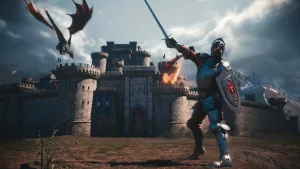
Unreal Engine 5 & Evolving VFX
With Unreal Engine 5 here and in full swing, the gaming and entertainment industries are keeping a keen eye on its VFX capabilities. At Magic Media, our teams have been working closely with its evolved and growing toolset to bring even greater results to the projects we contribute to. It’s no secret that Unreal Engine and its latest release have had a huge impact on the gaming and VFX industries.
Visual Style and VFX in Gaming
There’s no need to explain the importance of VFX in gaming, as it forms the backbone of players’ visual experience! We’ve talked at length about the advantages of Unreal Engine 5 for game development, and about how to choose your game’s art style. This is because we’ve seen how important the visual elements are. VFX and visual art style set the tone for your game, for the world and themes your player is about to experience. Despite our desire to feel and live out each experience, we are slaves to the visual.
We make impressions of everything we see within the first few moments and gaming is a cut-throat business. If your animation, VFX, or art is lacking or not up to snuff, players will drop off without giving you a chance.
This isn’t just focused on the rising photorealism in gaming which we are seeing more often. And Unreal Engine has always boasted a high-graphical premium. Unreal Engine 5 offers this in spades, introducing more advanced simulations, lighting systems, and character creation. But aside from the growing photorealism available to developers, even a stylized and non-photoreal game needs to pull its weight visually.
Player Immersion and Experience
Our teams are all focused on creating the best possible experience for players. We understand that one of the first steps, one that must always be kept consistent, is the visual style. We often sound like a broken record when discussing it!
But it must be said repeatedly; when it comes to gaming, player immersion, and experience live and die with proper VFX, art, and animation. VFX, in particular, provides players with the weight and visual feedback as well as informs players on game mechanics and environmental hazards or boons! We’ve spoken before about how important VFX is in visually communicating game information.
This is where Unreal Engine 5 stands out amongst its peers. It isn’t just its included Niagara VFX System, which isn’t a new addition, but simply an improved one. It is the capability of the engine that makes Unreal Engine such a VFX powerhouse.
When it comes to delivering a stellar visual player experience, the capacity of Unreal Engine 5 and its tools are a great place to start. Niagara, like all features of UE5, has comprehensive documentation. There you can find out how to implement features like the in-built fluid simulations for smoke, gases, flames, and water, as well as collisions and custom modules.
VFX Beyond Gaming
The capacity of game engines is now extending outside of gaming. As mentioned for The Mandalorian, with its unique “StageCraft” on-set live VFX, the entertainment industry is beginning to see the potential. No more giant blue and green screens with actors imagining the world around them. No more painstaking VFX clean-ups for reflections of huge green and blue tarps.
The importance of VFX in gaming extends beyond mechanical communication. Its potential is limitless and it’s important to understand that no matter the leaps the entertainment industry is making, it’s only catching up to gaming. Now that we see movies and TV shows picking up this technology and experimenting, it speaks to the boundless potential gaming has to explore.
VFX in Different Game Genres
Different game genres have different requirements when it comes to VFX. For example, action games require explosive effects and intense character animations, while puzzle games may require subtle environmental effects. We’ll explore how VFX can be used in different game genres below.
Action Games
Action games, like Blankos Block Party, require intense and explosive visual effects to create a sense of excitement and adrenaline. These effects include explosions, gunfire, and intense character animations.
RPG Games
RPG games require a variety of visual effects to create a sense of immersion and realism. These effects include lighting, weather, and detailed environmental effects.
Puzzle Games
Puzzle games require subtle and simple visual effects to enhance the gameplay experience. These effects include UI animations, particle effects, and simple environmental effects.
Visual effects play a crucial role in creating an immersive and engaging game world. In this guide, we’ve explored the different techniques and uses of VFX in games. By incorporating these techniques into your game development process, you can create stunning visual effects that enhance the overall player experience.
VFX in the Video Game Industry
In 2019, the total value of the global animation, game VFX, and video games industry was estimated to be a whopping $264 billion, meaning that the engaging and high-definition visual experiences entrance global consumers. Due to the continuous growth within the technological sector, it is no surprise that the game VFX and gaming industries are some of the fastest growing in the global media and entertainment market.
The rapid growth in animation, game VFX services, and video gaming is largely due to the influence of existing factors such as; targeted broadcasting hours by cable and satellite TV, availability of low-cost internet access, and penetration of mobile devices alongside the growing popularity of streaming video.
The Dynamic VFX and Games Industry
Unsurprisingly, game VFX is an extremely vast and dynamic industry offering multiple opportunities within the media and entertainment sector. According to market research, the game VFX and animation market is expected to achieve a CAGR of over 9% during the 5 years between 2020-2025.
This news is extremely exciting for gaming companies as the demand for high-quality content by consumers, and the adoption of cloud for game VFX will heavily affect the growth of the global VFX software market. Due to the information mentioned previously, it is no surprise that the evolution of visual effects continues to change dramatically. Regarding the creation and consumption of video games, 2D animation will continue to survive. However, it will take the form of hybrid 2D/3D animation.
Game VFX in Development Companies
Building a good team that effectively plans and incorporates visual effects has become a crucial part of any game development studio. The more powerful technology becomes, the fewer limitations studios have when achieving realistic visuals.
Visual effects allow developers to build experiences where players get feedback. Done well, players receive a very clear understanding of the game’s intent and the potential consequences of any actions they take. This creates a satisfying and gratifying feeling for players that the game recognizes what they’re doing by responding to them.
Unsurprisingly, game VFX will continue to be an important feature in many games for years to come. However, we might not see huge leaps in visuals for some time given that visual effects fidelity is already very high. Due to this information, studios will begin to offer an increasing variety of art styles as a way to stand out in the ever-crowded industry. However, the driving forces behind these technical evolutions are passion and desire to innovate. So, we wouldn’t be surprised to see some growth if it happens.
The Differences Between Game and Movie VFX
The differences between game and movie VFX are not always immediately apparent to many people. Often, the role of visual effects in gaming is not as widely recognized as in film. However, it’s essential to understand that VFX is a significant component of both industries, and there are distinct nuances to how it’s applied in games versus movies.
Visual effects in movies is getting harder and harder to spot, they say that the only VFX you ever see is bad VFX. Or the ones that are so far from possible that they must have been created by an artist and rendered for your viewing pleasure.
But in games, of course, we recognize everything as computer-generated. And VFX is a huge part of the games industry. Without it, games would be pretty colorless! The real difference between games and movies is their purpose and how they are used. And in games, they are a language unto themselves.

VFX Tools of the Trade
To start with something simple, let’s look at the tools used by artists across both industries. And it’s straightforward.
Take Houdini, a tool for simulations. Whenever you see VFX water or fire, smoke or snow, there’s a decent chance that it was created in Houdini. However, in movies, Houdini would be used for the simulations, and they’ll likely use another program to composite it into the full shot.
In games, it’s a little different. These tools are more like additions to the main workflow. This is because the majority of the work is conducted in-engine, as each game would have its own. For a game artist, things like Houdini and Substance Designer are complementary tools that are added to the game’s engine.
It’s an adaptive process for them. While movie artists have some level of luxury in choosing the program they most prefer.
A Frame Versus an Environment
For movies or cinematics, VFX serves as an augment. An upgrade and enhancement to the shot that already exists. It is viewed by every single spectator and audience member from the same spot, at the same time, in the same way.
This is probably one of the biggest differences between game and movie VFX. The incredible VFX that populates a movie is only ever created to be viewed at that moment, from a single angle. Game VFX artists must create these effects with consideration to a 3D environment. It could be seen from any angle, and it must be seen to react naturally with other objects in the environment.
Limited Resources
In a movie, the only limitation to VFX is time and budget. As long as it can be rendered in time and composited in, that element can be as complex as you want it to be. It can be multiple simulations containing millions of particles, and thousands of elements inside it. If you can get that rendered, it can be included.
In games, every VFX is measured against the limited resources of a live-running machine. Game VFX artists must create their work, all while considering and testing the game’s resources and hardware limitations.
There is a minimum frame rate, typically 30 or 60 frames per second (FPS), that needs to be maintained. You can include an incredible water simulation, for example, but if it completely ruins the frame rate, it has to be simplified or removed.
Communication Without Speech
Probably the biggest difference between creating movie and game VFX is their purpose. Of course, all VFX serves a visual purpose. An explosion isn’t hard to decipher, but it’s more than that. In games, visuals are a vernacular of game language all on their own.
For movies, visual communication is present, but it’s not nearly as important. These things are often explained in one way or another.
However, if you told a gamer to imagine spikes and what that means in-game, they would tell you danger and damage. Perhaps even instant death like in the older Super Mario games.
Everything tells players something, and it’s a long-standing shorthand language that has developed over the years in the games industry.
Green usually means healing, blue is probably a shield. Purple, red, and black, often mean damage and danger. But for a game VFX artist, it’s not just simply applying color to an effect. VFX in games must serve as a clear, visual communication of what is happening.
Shades of green and their context can change their meaning entirely. One pot of green is a fresh healing draught and the other is a bubbling acid grenade! The context and subtleties must all be considered and applied through the game by these artists.
It’s an aspect of game design, and these things are taught to the player through experience. And it’s all created in service of the final gameplay experience.
Visual effects play a crucial role in creating an immersive and engaging game world. In this guide, we’ve explored the different techniques and uses of VFX in games. By incorporating these techniques into your game development process, you can create stunning visual effects that enhance the overall player experience.
At Magic Media, we are veterans of the gaming, tech, and entertainment industries, offering comprehensive services including game development, game VFX, animation, and full art services! Our main goal is to provide a one-stop solution for any project. We love nothing more than collaborating with creative minds, so drop us a line, and let’s create magic!

